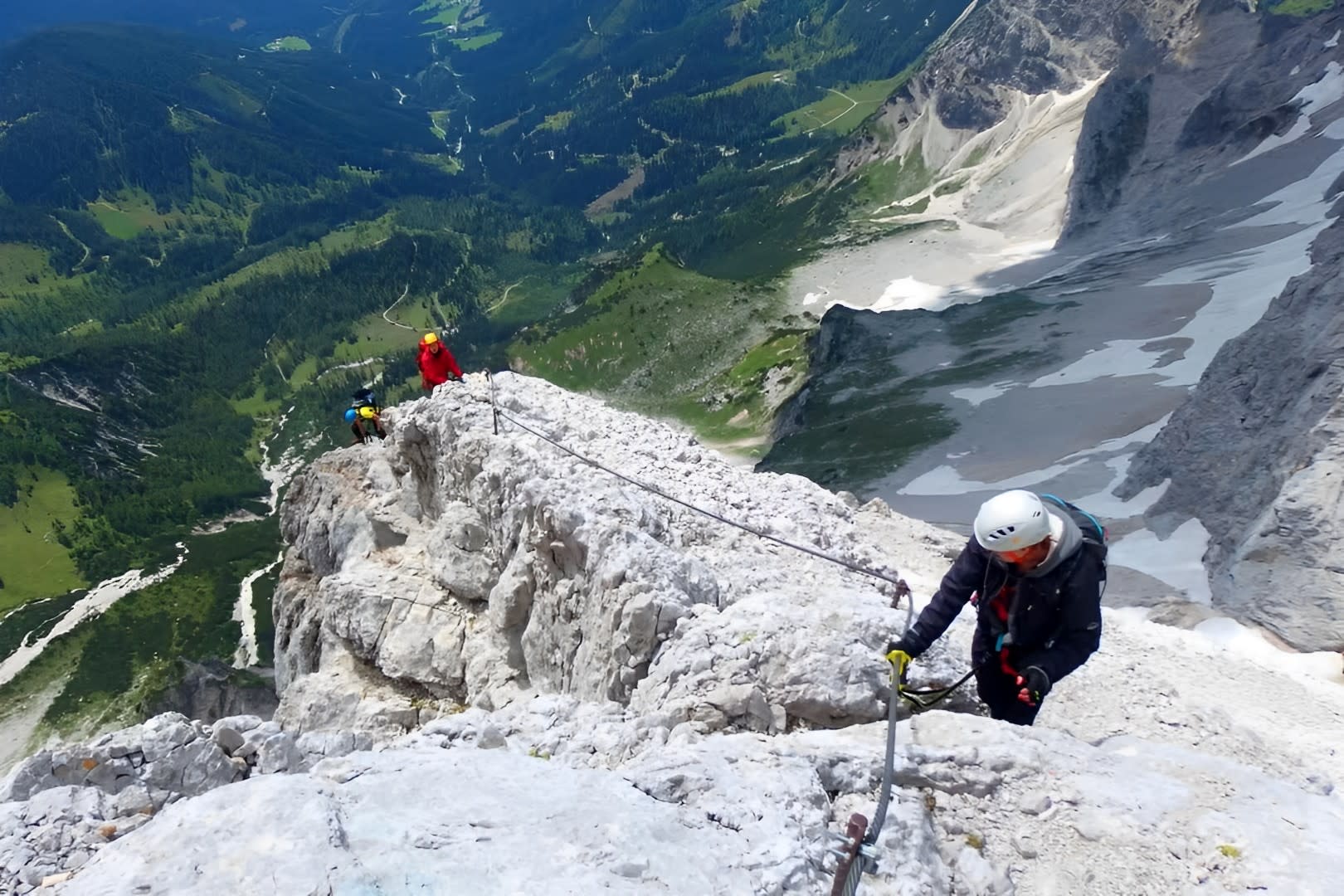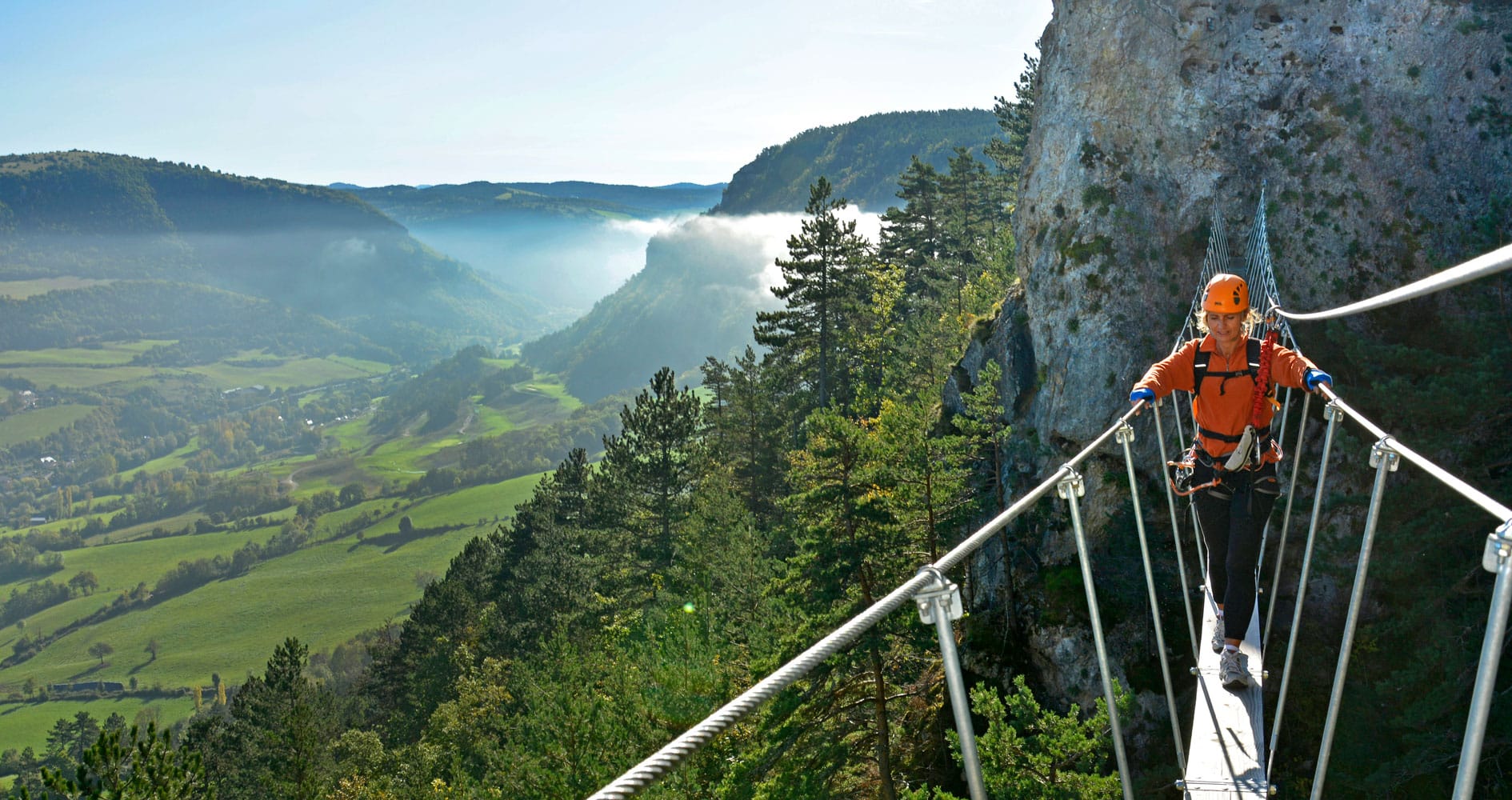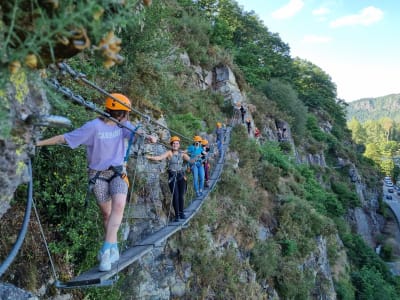
The best Via Ferrata activities
201 activities match your criteria

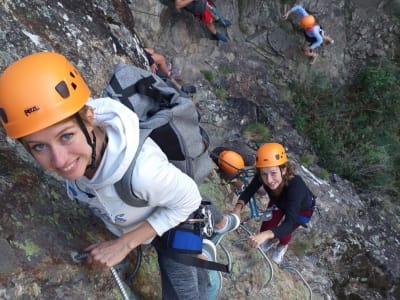
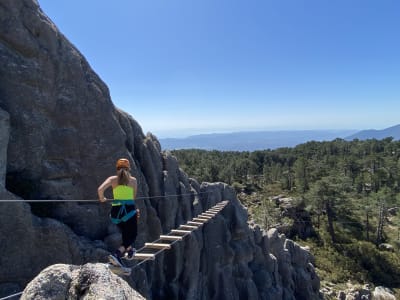
Via Ferrata of the Ospédale near Porto-Vecchio, Corsica
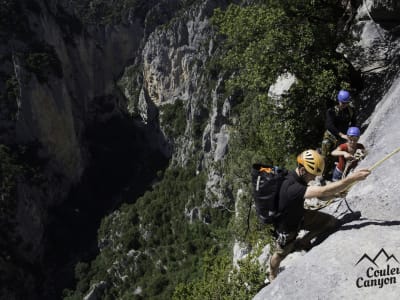
Via Cordata of Trou du Renard in the Verdon Gorge
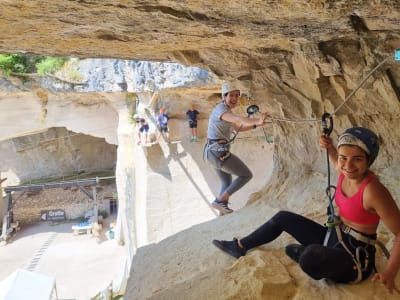
Via Ferrata of the Grotte de Champ Retard in Burgundy
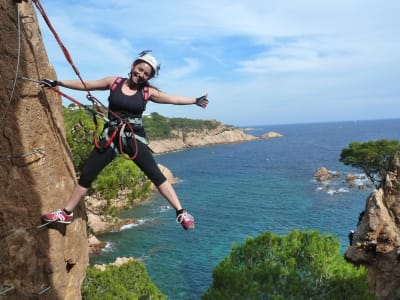
Via Ferrata in Cala del Molí, near Sant Feliu de Guixols
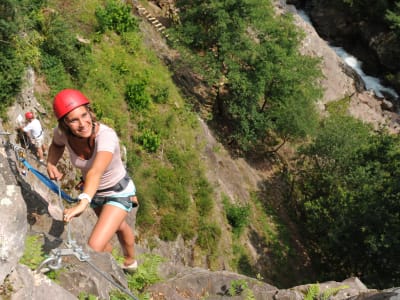
Via ferrata in the Basque Country, at Bidarray near Biarritz
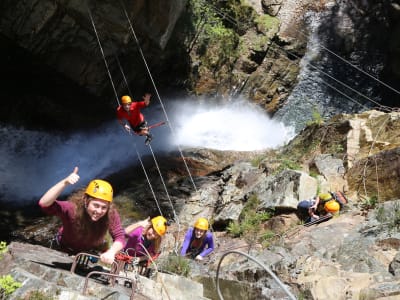
Via ferrata excursion in Kinlochleven, near Fort William

Via ferrata in the Calanques of La Ciotat
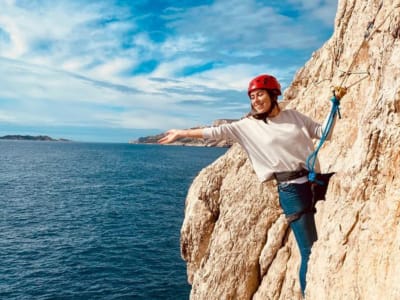
Via ferrata in the Calanque de Sormiou near Marseille

Via Cordata of Trou Souffleur, La Ciotat


Via ferrata of Clécy in Normandy

Via ferrata of Pont du Diable in Ardèche

Via Ferrata of the Ospédale near Porto-Vecchio, Corsica

Via Cordata of Trou du Renard in the Verdon Gorge

Via Ferrata of the Grotte de Champ Retard in Burgundy

Via Ferrata in Cala del Molí, near Sant Feliu de Guixols

Via ferrata in the Basque Country, at Bidarray near Biarritz

Via ferrata excursion in Kinlochleven, near Fort William

Via ferrata in the Calanques of La Ciotat

Via ferrata in the Calanque de Sormiou near Marseille

Via Cordata of Trou Souffleur, La Ciotat

Via ferrata La Hermida, Picos de Europa
About Via Ferrata
Via Ferrata: Scale New Heights on a Safe, Thrilling Adventure
Via ferrata, which means "iron road" in Italian, offers an exciting blend of hiking and climbing, allowing participants to traverse cliff faces and scale mountainous terrain with the help of metal rungs, cables, and bridges. This thrilling outdoor activity provides the perfect middle ground between hiking and full-on rock climbing, making it accessible to beginners and adventurers of all ages. For those seeking an adrenaline-pumping experience with breathtaking views, via ferrata delivers an unforgettable adventure, combining the thrill of heights with the safety of a well-secured route.
The Origins and History of Via Ferrata
Via ferrata has its roots in the Italian Alps during World War I. The routes were initially built to allow soldiers to traverse dangerous mountain terrain quickly and safely. These "iron paths" were equipped with fixed cables, ladders, and bridges to aid movement across steep or exposed areas, often in treacherous weather conditions. The Dolomites, a mountain range in northeastern Italy, were a crucial battleground, and many of the original via ferrata routes can still be explored today.
After the war, these routes were repurposed for recreational use, allowing adventurers to experience the mountains in a safer and more accessible way. Over time, the popularity of via ferrata grew, and new routes were built across Europe and beyond, from the Alps to the Rockies and even in remote parts of China. Today, via ferrata has evolved into a popular outdoor sport, attracting climbers, hikers, and thrill-seekers from around the globe.
Modern via ferrata routes are meticulously maintained, ensuring safety while still providing the excitement of scaling dizzying heights and crossing thrilling suspension bridges. Whether you’re walking through history on the battle-worn paths of the Dolomites or experiencing the scenic cliffs of the French Alps, via ferrata offers an extraordinary way to connect with nature.
Types of Via Ferrata Routes
Via ferrata offers a range of routes suited to different skill levels and adventure preferences. Whether you’re looking for a leisurely walk through the mountains or a vertical ascent up steep rock faces, there’s a route for you. Here are the primary types of via ferrata routes:
Beginner and Family-Friendly Routes
Designed for those new to the sport, these routes feature moderate inclines, easy-to-navigate rock faces, and short vertical sections. Beginners will find these routes an excellent way to experience the thrill of via ferrata without too much physical or mental strain. These are also perfect for families with children, as they often include wider paths and more gradual ascents.
Intermediate Routes
For adventurers with a bit more experience, intermediate routes offer steeper ascents, narrow ledges, and longer exposure to heights. You may encounter a mix of climbing, traversing, and bridge crossings. These routes are ideal for those looking to push their limits but still enjoy the relative security of fixed cables and easy-to-use climbing gear.
Advanced and Technical Routes
Reserved for experienced climbers, these routes are highly technical, featuring vertical or even overhanging sections, challenging traverses, and exposure to significant heights. Climbers may need to use more advanced climbing techniques and equipment to navigate these paths. The reward? Unparalleled views, an adrenaline-fueled experience, and a deep sense of accomplishment.
Sport Via Ferrata
These routes are often designed for competition or fitness-focused climbers, featuring time trials or highly challenging sections to test strength, endurance, and skill. Though these routes may not always focus on scenic views, they offer a demanding physical challenge for those looking to combine fitness with adventure.
No matter your experience level, there’s a via ferrata route that can offer the perfect mix of adventure, challenge, and enjoyment. From family-friendly trails to advanced climbing paths, via ferrata provides an excellent way to explore the outdoors.
Essential Equipment for Via Ferrata
The beauty of via ferrata lies in its accessibility; with the right equipment, nearly anyone can safely experience the exhilaration of scaling rocky heights. While adventure providers often offer gear rentals, it's helpful to know what equipment is necessary and why it's used. Here’s a breakdown of the essential gear:
Harness
A secure climbing harness is the most important piece of gear for via ferrata. It attaches you to the safety cable system and provides support during climbs and descents. A good harness should be adjustable for comfort and security, ensuring a snug fit without restricting movement.
Via Ferrata Lanyard
A specially designed lanyard is used to clip you onto the metal cables running along the route. It typically has two carabiners attached to dynamic (stretchable) rope or webbing that helps absorb shock in the event of a fall. As you progress along the route, you alternate the carabiners between sections of the cable for continuous safety.
Helmet
A helmet is essential for protecting against falling rocks or accidental bumps during your climb. Even on easy routes, the terrain can be unpredictable, and helmets safeguard against injuries, making them a non-negotiable part of your kit.
Climbing Gloves
Gloves help protect your hands from rough rocks, sharp metal edges, and the friction caused by holding onto cables or rungs. They also provide extra grip, which can be useful on more technical routes.
Sturdy Footwear
Good shoes are key to comfort and safety on a via ferrata. Sturdy hiking boots with excellent grip (preferably those designed for mountain terrain) are ideal. The soles should be rigid enough to provide support on rocky surfaces while offering flexibility for easier movement.
Clothing
Wear lightweight, moisture-wicking clothing appropriate for the weather. Layering is essential for mountainous environments where the temperature can change rapidly. Bring a waterproof jacket in case of sudden rain and ensure freedom of movement for climbing sections.
Having the right gear is crucial for both safety and enjoyment during your via ferrata experience. Whether you’re renting from a provider or investing in your own equipment, understanding what each item does will help you make informed choices for your adventure.
Top Via Ferrata Spots Around the World
Via ferrata routes can be found in stunning landscapes all around the globe, from the Italian Dolomites to the American Rockies. Here are some of the best destinations for experiencing the thrill of via ferrata:
Dolomites, Italy
As the birthplace of via ferrata, the Dolomites offer some of the most famous and historically significant routes in the world. With breathtaking views of towering limestone peaks and deep valleys, the routes here vary from beginner-friendly trails to challenging, multi-day climbs. The Via Ferrata Giovanni Lipella and Via Ferrata delle Bocchette are two must-try routes for adventurers.
French Alps, France
France is home to an extensive network of via ferrata routes, many of which are set against the stunning backdrop of the French Alps. The Via Ferrata de la Bastille near Grenoble is one of the most popular routes for beginners, offering incredible views of the city and surrounding mountains.
Banff National Park, Canada
Banff is known for its incredible mountain landscapes, and its via ferrata routes are no exception. The Banff Norquay Via Ferrata is a fantastic option for beginners and intermediate climbers alike, with routes that lead to stunning vistas of the Canadian Rockies.
El Chorro, Spain
For those seeking adventure in warmer climates, the via ferrata in El Chorro, near Málaga, Spain, offers a mix of scenic beauty and thrilling climbs. The Caminito del Rey, while not a true via ferrata, shares similar characteristics, with suspended walkways and incredible views of the gorge below.
Brienz, Switzerland
The Via Ferrata Brienzergrat in Switzerland offers a truly alpine experience, with long, challenging sections that reward climbers with panoramic views of Lake Brienz and the surrounding mountains. This route is more advanced, but the sense of achievement at the summit is unforgettable.
Each of these destinations offers a unique experience, from historical routes in the Dolomites to the rugged beauty of Canada’s national parks. Whether you're seeking an easy climb with beautiful views or an adrenaline-pumping challenge, via ferrata routes around the world promise an unforgettable adventure.
Key Terms and Vocabulary for Via Ferrata
Familiarising yourself with the key terminology used in via ferrata can help make your experience more comfortable and enjoyable. Here are some terms to know:
Carabiner: A metal clip used to attach your harness to the safety cable along the route.
Lanyard: A strap that connects the climber's harness to the cable via carabiners.
Ferrata Kit: The complete set of equipment required for via ferrata, including the harness, helmet, and lanyard.
Exposure: A section of the route where there is a steep drop-off, often adding to the thrill and challenge of the climb.
Rung: The metal steps attached to the rock face, which climbers use for support and to ascend the route.
Understanding these terms can help make the sport less intimidating, especially for beginners who may be unfamiliar with climbing jargon.
The Benefits of Via Ferrata
Via ferrata offers a wide range of benefits that go beyond the excitement of scaling heights. Here are some of the physical
and mental advantages of taking part in this thrilling sport:
Physical Fitness
Via ferrata requires strength, endurance, and balance, offering a full-body workout. The climbing motions engage your core, arms, and legs, while hiking through mountainous terrain enhances cardiovascular health and boosts stamina. Even at beginner levels, you’ll experience improved coordination and flexibility as you navigate the rugged terrain.
Mental Resilience
The exposure to heights and challenging sections of the route encourages climbers to build mental fortitude. Via ferrata helps overcome fear of heights, boosts confidence, and teaches you to trust in your abilities. The combination of physical effort and mental focus makes it a great way to develop resilience and push your limits.
Connection with Nature
Via ferrata takes you to some of the most beautiful and remote landscapes in the world. Whether you're scaling cliffs in the Alps or hiking along rocky ridges in Canada, this sport offers a profound connection to the natural world. The sense of awe and wonder experienced during the climb can be deeply therapeutic, offering a peaceful escape from everyday life.
Stress Relief
Outdoor activities, particularly those that involve physical exertion and stunning scenery, are known for their stress-reducing benefits. Via ferrata combines both, making it an excellent way to clear your mind, reduce anxiety, and experience the calming effects of being in nature.
Social Bonding
Via ferrata is often a group activity, where climbers work together to tackle challenging sections and encourage each other along the way. It’s a fantastic opportunity to bond with friends, family, or even meet new people, creating shared memories in an adventurous setting.
Tips for Getting Started with Via Ferrata
If you’re ready to try via ferrata, here are some key tips to ensure your experience is safe, enjoyable, and rewarding:
Choose the Right Route
Start with a beginner or family-friendly route if you're new to the sport. Check the difficulty rating of the via ferrata and consider the length of the route, altitude, and exposure. Some routes are short and easy, while others can take several hours to complete and require a higher level of fitness.
Book with a Guide
If you're unfamiliar with via ferrata or want extra assurance, consider booking a guided tour through Manawa. A professional guide will ensure that you have the right equipment, explain the safety procedures, and guide you through the route, making your experience safer and more enjoyable.
Practice Safety
Always double-check your harness and carabiners before starting the route, and make sure you're clipped into the cable at all times. Keep a steady pace, stay aware of your surroundings, and never rush through sections. Safety is paramount in via ferrata, and it’s important to follow the guidelines to avoid unnecessary risks.
Train and Prepare
While via ferrata is accessible to beginners, it’s beneficial to prepare physically. Engaging in activities like hiking, rock climbing, or even regular cardio and strength training can make your experience more enjoyable by improving your endurance and flexibility.
Dress for the Conditions
Pay attention to the weather and dress accordingly. Layers are essential for mountainous regions where the weather can change quickly. Bring a backpack with water, snacks, and an extra jacket, and make sure your footwear is suitable for rugged terrain.
Ready to Climb? Book Your Via Ferrata Adventure with Manawa
Via ferrata offers a unique, thrilling way to experience the great outdoors, combining the excitement of climbing with the accessibility of hiking. Whether you're a seasoned adventurer or trying it for the first time, this sport allows you to conquer new heights while staying safe and secure.
Booking your next via ferrata adventure through Manawa ensures a memorable experience, with options around the world tailored to all skill levels. Whether you're exploring the historical routes of the Dolomites or scaling the dramatic cliffs of the French Alps, you'll be guided by professionals who prioritise your safety and enjoyment.
Take the first step toward an unforgettable adventure and book your via ferrata experience today!
